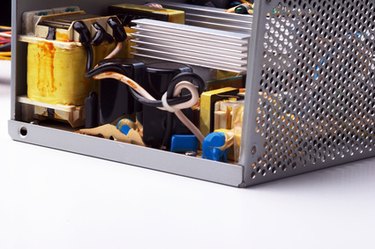
While people call some transformers “power supplies,” it is not technically accurate. There are similarities between transformers and power supplies that lead to the confusion; however, there are also some striking differences between the two.
Similarities
Video of the Day
Similarities between transformers and power supplies include the fact that both can alter electrical voltage for use by other circuits or devices. Power supplies often incorporate transformers into their designs to perform this function.
Video of the Day
Differences
All power supplies supply power, however, transformers have other applications, such as isolating circuits or altering signal voltages in amplifiers.
Power Regulation
Power supplies can regulate and vary electricity in many different ways. They can even provide different forms of power to different circuits simultaneously. Unable to regulate power, transformer outputs are fixed and only as stable as their inputs.
Power Conditioning
A power supply can clean and filter noise or static from raw electrical power, such as from a wall outlet. Transformers pass along any noise or static they receive to the circuits they service.
Application
Both transformers and power supplies can provide electricity to devices. If the device needs a stable and clean source of power, it requires a power supply. If the electricity can be raw, unfiltered and fluctuate, a transformer alone will suffice.